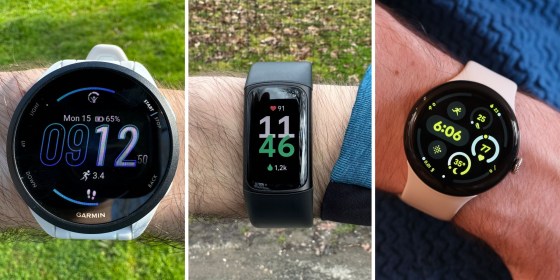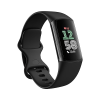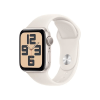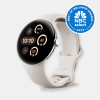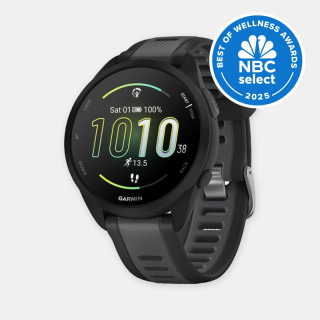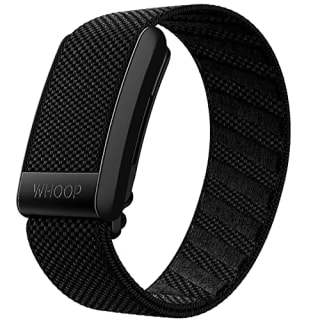Whether you are training for a marathon or working out for the first time in months, a fitness tracker can show you health and exercise data that can help you better understand your efforts. Most have heart rate, GPS and activity tracking built-in, and many can provide insights into your sleep and recovery. I’ve tested over a dozen fitness trackers and spoke with health and training experts to pick the best ones on the market.
SKIP AHEAD The best fitness trackers for 2025 | How to shop for a fitness tracker | Why trust NBC Select?
How I picked the best fitness trackers
I spoke with health and fitness experts to better understand how fitness watches, bands and rings can support your exercise and wellness journey. Based on their advice, I kept the following criteria in mind while selecting and testing different models:
- Comfort and wearability: A fitness tracker is only useful if you wear it, says Dr. Koyya Lewis-Trammell, associate professor of kinesiology and health promotion at California State Polytechnic University, Pomona. It can have the most advanced tools on the market, but those features are meaningless if you don’t wear it regularly.
- Compatibility: Not every phone is compatible with every fitness tracker — the Apple Watch only works on iPhone, for example. We include options that are compatible with both iOS and Android devices, so you can find a suitable option.
- Data tracking: Fitness trackers collect different kinds of biometric data and present it in different ways. We chose products that collect a range of fitness insights. Some show basic metrics like steps and heart rate, while others display more complex analysis of your workouts and efforts.
How I test fitness trackers
I’ve tested over a dozen fitness trackers and smartwatches for NBC Select. I am a runner and cyclist, and use fitness trackers to monitor my pace, heart rate and distance. I test each one for at least two weeks, using all of the features available, including sleep tracking. I often wear multiple fitness trackers at the same time to compare data like heart rate, average pace, mileage, elevation and sleep score.
To pick the best fitness trackers, I paid close attention to the following factors:
- GPS tracking: I noted how quickly each tracker connected to GPS and how consistent the data was, especially compared to other trackers.
- Comfort: I wore each tracker day and night to see if they became uncomfortable, disrupted my sleep or irritated my skin.
- Features: I tested as many features as possible but focused on fitness and wellness tracking tools and stats.
- Battery life: I tried each tracker for at least two weeks and noted how often I needed to charge the device.
Want more from NBC Select? Sign up for our newsletter, The Selection, and shop smarter.
The best fitness trackers of 2025
Our top picks come from well-known brands like Fitbit, Apple and Garmin. I have tested each one, and some also come recommended by experts in the health and fitness space.
In an effort to try as many options as possible, we contacted and received products from many brands, including (but not limited to) the ones on this list.
Best for beginners: Fitbit Charge 6
- Small, light, comfortable
- Long battery life
- Beginner-friendly app
- Cannot turn it off
- Some data needs a subscription
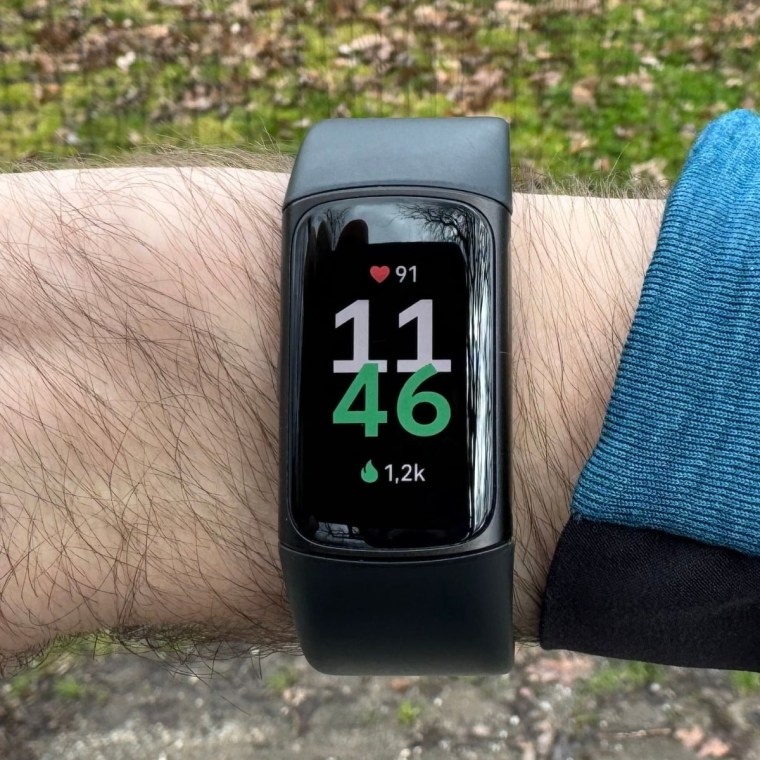
Many NBC Select staffers use Fitbit fitness trackers and love them because they are lightweight and easy to use. The Charge 6 is just that: a small, beginner-friendly fitness tracker that’s light on weight and light on price.
Despite having rarely used Fitbit products in the past, the Charge 6 felt comfortable after only a few minutes of swiping through the watch and app. The screen and stats are bright, colorful and easy to understand.
The Charge 6 tracks and showcases your heart rate, daily steps, distance traveled, fitness activities, calories burned and nightly sleep. It does not track more advanced running stats like cadence, stride length, ground contact time and vertical oscillation (our picks from Apple and Garmin do). Some data like detailed sleep stages and a daily readiness score are only available with a Fitbit Premium subscription, which costs $10 per month.
New to the Charge 6 is Google Wallet, Google Maps navigation and YouTube Music controls. It also now has a button on the left side that returns you to the home screen or pause workout screen. You can read more in our Fitbit Charge 6 review.
Display: 26mm touchscreen | Weight: 15g | Battery life: up to 7 days | Built-in GPS: yes | Sleep tracking: yes (not including naps) | Heart-rate monitor: yes, with EKG | Water resistance: yes, up to 50 meters | Works best with: Fitbit app (iPhone or Android)
Best for iPhone: Apple Watch SE (2nd Gen)
- Syncs seamlessly with iPhone
- Holistic health tracking
- So-so battery life
The Apple Watch is one fitness tracker that almost always stays on my wrist, and this is the brand’s lowest-priced model. It costs much less than the Apple Watch Series 10 and Apple Watch Ultra 2, but has almost all the same fitness tracking features and metrics.
The Apple Watch SE is easy to use, especially if you have used an iPhone before. The apps are similar or identical, and the square shape of the watch makes it easy to scroll through notifications and texts. It shows detailed workout, health and sleep metrics via the Apple Health and Apple Fitness, no subscription required. You can also use the Siri voice assistant to make requests and send voice texts, which is much easier than typing a text mid-run, in my experience.
The watch has up to 18 hours of battery life, according to the brand — that’s less than most competitors. To avoid battery life woes, I typically charge it every morning after waking up. It comes in two sizes, 40mm and 44mm, with many watch band options.
Display: 40mm or 44mm touchscreen | Weight: 26.4g (40mm), 32.9g (44mm) | Battery life: up to 18 hours | Built-in GPS: yes | Sleep tracking: yes (not including naps) | Heart-rate monitor: yes, no EKG | Water resistance: yes, up to 50 meters | Works best with: iPhone
Best for Android: Google Pixel Watch 3
- Syncs easily with Google apps
- Automatic workout detection
- Love it or hate it round shape
- Fiddly charger
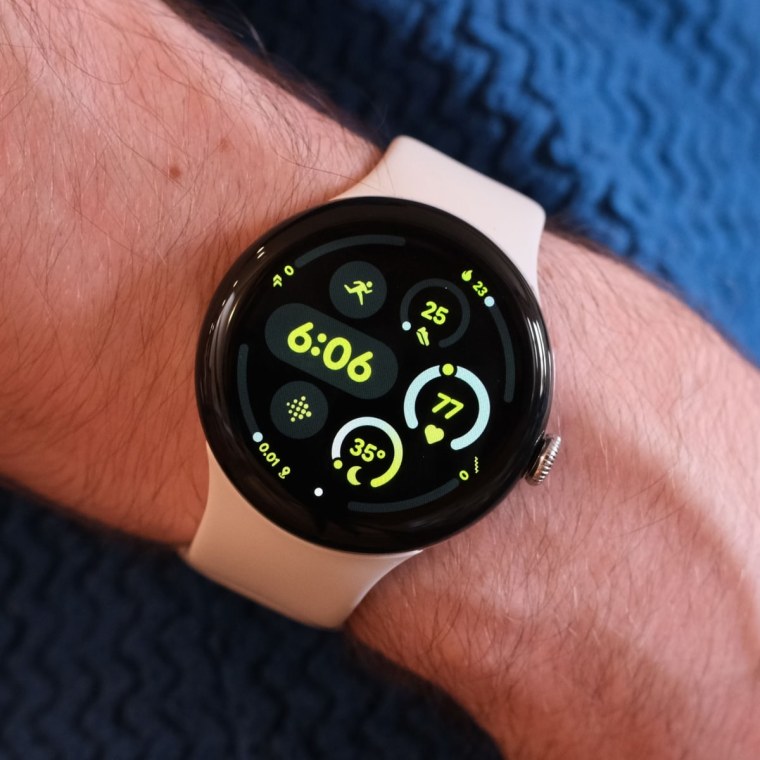
The Pixel Watch 3 is the best Pixel watch yet, and is a recent NBC Select Wellness Awards winner. It has major software and fitness improvements over the previous model that make it a solid option, especially for someone with an Android or Google Pixel phone.
It does everything you would expect of a premium smartwatch: notifications, texting, calls, tap-to-pay, media controls, offline maps and more.
The watch has built-in Fitbit fitness tracking with more than 40 workout types, and it has more in-depth fitness tracking data compared to other Fitbit products like the Fitbit Charge 6. It can also automatically detect walks, runs, bike rides, treadmill, elliptical, rowing and spin exercise after five minutes (15 for walking). As someone who often forgets to log walks, I love how hands-off this feature can be.
But the new fitness and wellness features are what makes the Google Pixel Watch 3 one of our top picks. There are too many features to list here, but one of my favorites is building custom workouts, including custom runs with warm ups, cool downs, intervals and heart rate targets. As I ran, the watch buzzed and cued me into my next section and indicated if I was on, ahead or behind my target goals. Other favorite features include cardio load and daily readiness scores.
It comes in two sizes, 41 millimeters and 45 millimeters, with screens that are up to twice as bright as the previous version. Battery life is also improved — it lasts up to 24 hours, according to the brand.
Display: 41mm or 45mm touchscreen | Battery life: up to 24 hours with always-on display | Built-in GPS: yes | Sleep tracking: yes | Heart-rate monitor: yes, with EKG | Water resistance: yes, up to 50 meters | Compatible with: Android phones
Best for runners: Garmin Forerunner 165
- Long battery life
- Accurate GPS
- Ample tracking metrics
- App learning curve
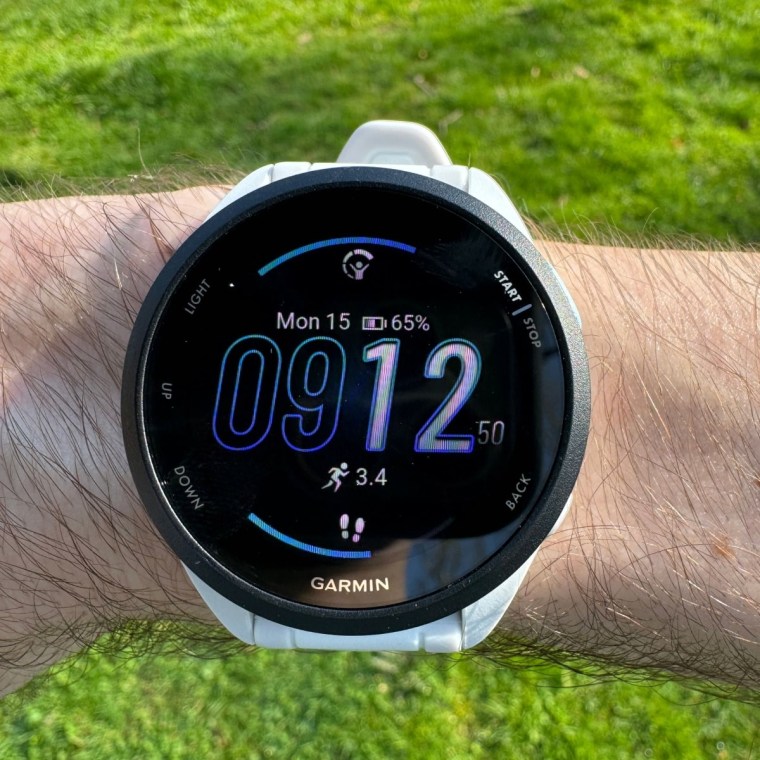
Garmin makes some of the best fitness trackers for runners and athletes. The Garmin Forerunner 165 is one of their latest models, and it pairs some of the brand’s best features with a competitive price point.
The Forerunner 165 has more fitness and training features than most of the competition, including the options on our list. One feature I like is the morning report: every morning, the watch shows me a series of stats, including a daily exercise recommendation, my sleep score, the weather and more. Another is called body battery, an energy score that changes throughout the day based on exercise, stress, rest and sleep. The morning report and body battery helped me create a better workout routine.
Exercise stats are very specific, especially for running — you have multiple metrics and charts for things like pace, speed, heart rate, cadence, stride, intensity and more. All that data does mean Garmin has a slight learning curve, at least for the first few days. However, I felt comfortable navigating the app after a week of use.
Like most Garmin watches, the Forerunner 165 has excellent battery life — I averaged about 10 days before needing to charge. It also connects to GPS quickly, usually within five seconds. You can read more in my Garmin Forerunner 165 review.
Display: 43mm touchscreen | Weight: 39g | Battery life: up to 11 days | Built-in GPS: yes | Sleep tracking: yes (including naps) | Heart-rate monitor: yes, no EKG | Water resistance: yes, up to 50 meters | Works best with: Garmin app (iPhone or Android)
Best for data analysis: Whoop 4.0
- Comfortable band
- Detailed metrics
- Expensive monthly subscription
For in-depth data analysis, consider Whoop 4.0, says celebrity personal trainer Rhys Athayde. Whoop is not a typical fitness watch. It is a small, screenless tracker built into a stretchy polyester and nylon band. It doesn’t track daily steps, stairs climbed or active minutes, nor does it ping you with notifications.
Whoop analyzes your daily health and recovery metrics to give you scores on things like body strain, recovery and sleep in the Whoop app. It showed me how hard my workout sessions are for my body rather than how fast or far I run. Looking at these recovery-focused scores, I found myself thinking more about the quality of my workouts rather than the quantity.
NBC Select editor Jordan Bowman and I found the Whoop very comfortable to wear — Bowman wore it more often than other trackers because it never felt out of place on his wrist.
Whoop requires a subscription to use, which costs $30 per month or $239 per year. You have to pay the first year up front as part of buying the device.
Display: N/A | Weight: 18g | Battery life: up to 5 days | Built-in GPS: N/A | Sleep tracking: yes (including naps over 1 hour) | Heart-rate monitor: yes, no EKG | Water resistance: yes, up to 10 meters (for 2 hours) | Works best with: Whoop app (iPhone or Android)
Best smart ring: Oura Ring 4
- Improved 8 day battery life
- Inclusive fit and sizing
- Accurate health tracking
- Requires a subscription
- Not the best for runners

If you want to track health, wellness, sleep and basic fitness stats, but hate wearing watches, consider a smart ring like the Oura Ring 4. I tested it for over two months — it’s one of the best smart rings on the market right now, especially for sleep and wellness tracking.
The Oura Ring 4 tracks stats like heart rate, body temperature, blood oxygen, sleep stages, stress levels and exercise metrics and stores them on the Oura app. It automatically tracks walks as well, but it’s best to manually start and stop other exercises like runs, yoga and strength training. It categorizes and gives you broad scores for three main categories: readiness, sleep, and activity.
Because it doesn’t have a screen, it cannot show live stats like pace, distance or heart rate zones, meaning it’s not a great fit for avid runners or cyclists
The Oura Ring comes in six colors and a range of sizes. While you can use the Oura Ring without a subscription, you’ll be limited to the current day’s sleep, readiness and activity scores. An Oura Ring membership costs $6 a month. You can learn more in my Oura Ring 4 review.
Display: N/A | Weight: 3.3-5.2 grams | Battery life: up to 8 days | Built-in GPS: no | Sleep tracking: yes (including naps) | Heart-rate monitor: yes, with EKG | Water resistance: yes, up to 100 meters (up to 12 hours) | Works best with: Oura app (iOS or Android)
How to shop for a fitness tracker
When shopping for any fitness tracker, price and compatibility should be top of mind. But beyond that, our experts recommend prioritizing the following:
Prioritize comfort
Both Lewis-Trammell and Athayde say that comfort and wearability are the most important factors of any fitness tracker.
If you don’t ever wear rings, you probably won’t find the Oura Ring comfortable. Similarly, if you don’t like to wear a watch, a smartwatch like the Apple Watch or Google Pixel Watch might be uncomfortable. “Ultimately, you’re looking for a device you’re going to wear long term so that it can provide you with the most accurate data,” says Athayde.
Because trackers come in so many shapes and sizes, I recommend going to a store in-person to try a few different options and see what form-factor makes sense for you. Having tested over a dozen options, I am surprised how different each model feels, even ones with similar wristbands.
Identify your goals and needs
It’s not just athletes that benefit from fitness trackers, says Athayde. Everyone can benefit from the data fitness trackers provide, if you understand your wants and needs, in my experience.
Before shopping around, think about what data you care about. If you love outdoor exercise stats like pace and power, a Garmin watch may match your habits best. If you want broad exercise and health data, plus all the latest apps, a smartwatch from Apple or Google is a good fit.
What’s best for you depends on your daily habits and larger goals, according to our experts. Take stock of them before you checkout.
Meet our experts
At NBC Select, we work with experts who have specialized knowledge and authority based on relevant training and/or experience. We also take steps to ensure all expert advice and recommendations are made independently and without undisclosed financial conflicts of interest.
- Dr. Koyya Lewis-Trammell is an associate professor of kinesiology and health promotion at California State Polytechnic University, Pomona.
- Rhys Athayde is a celebrity personal trainer and the former co-owner and director of fitness and operations at Ghost Williamsburg.
Why trust NBC Select?
I am a reporter at NBC Select who covers technology and fitness including recent stories on running shoes, workout earbuds, point-and-shoot cameras and more. For this piece, I interviewed fitness and health experts to get a better understanding of workout data and metrics. I also tested over a dozen top-rated fitness trackers and smartwatches. For a broader perspective, I spoke with other NBC Select staffers about their experience using fitness trackers.
Catch up on NBC Select’s in-depth coverage of tech and tools, wellness and more, and follow us on Facebook, Instagram, Twitter and TikTok to stay up to date.
